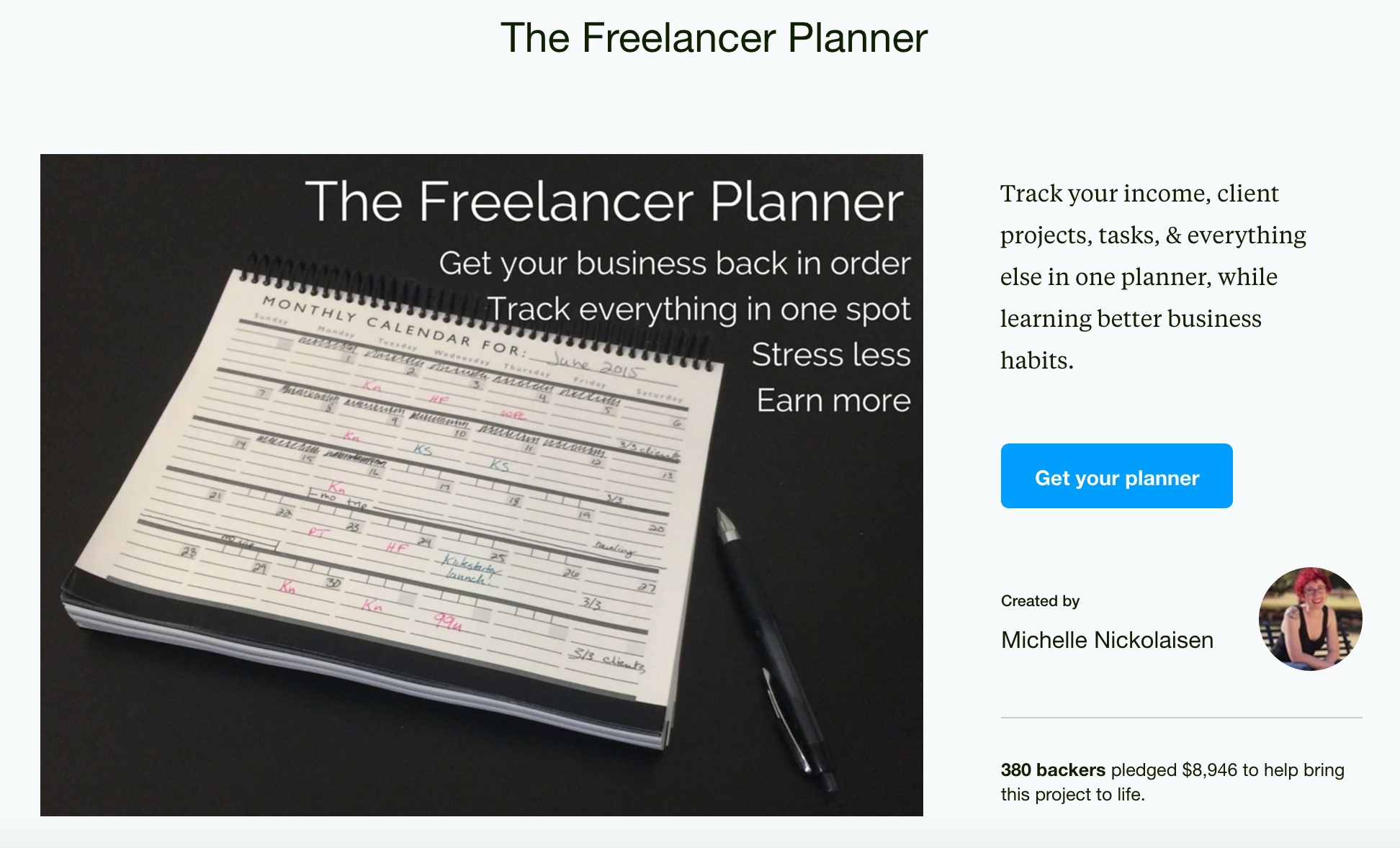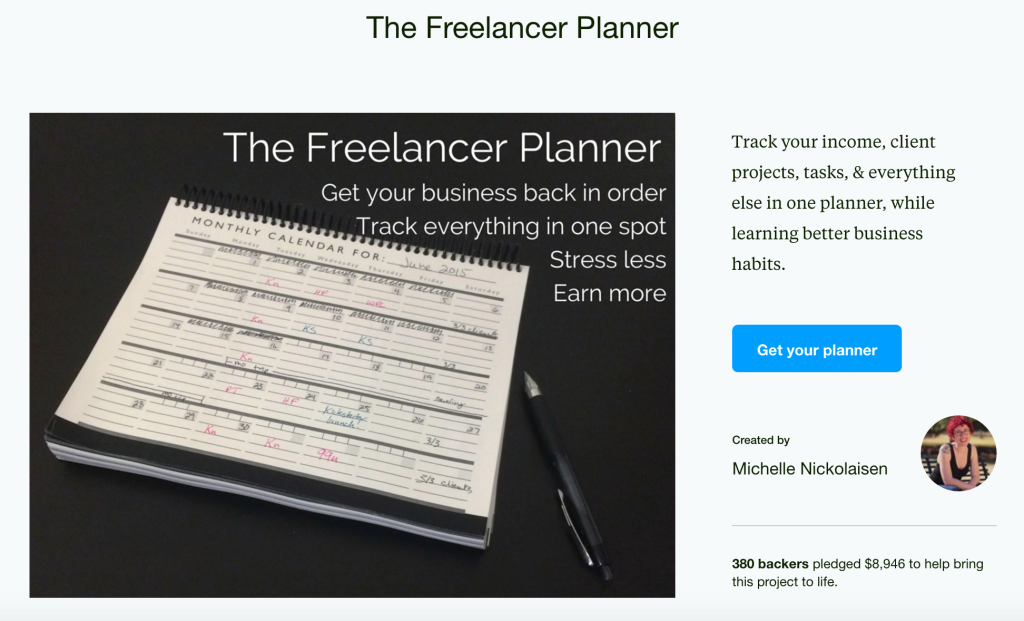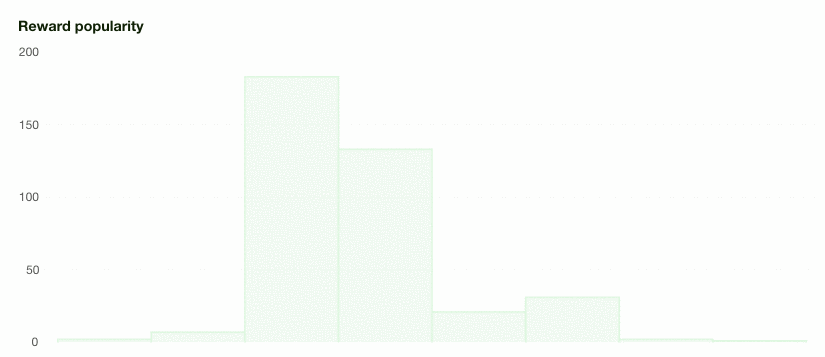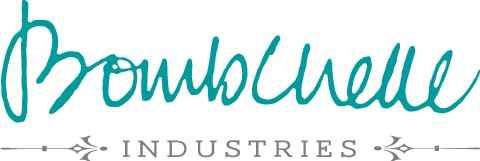

Last summer, I ran a Kickstarter campaign to fund a first print run of my Freelancer Planner. And it was successful: funded to 156%! It was easily one of the biggest projects of my career to date, and I’ve been planning on doing a breakdown blog post series for ages now. That day has finally come.
First off, everyone tells you a Kickstarter is all consuming, and I’m here to say: that is the truth. And not just for the time you’re running the campaign, either. Expect it to eat a solid six months of your life, minimum, the way a naughty dog steals leftovers, without mercy or remorse.
Does that sound dramatic? Probably, but it’s warranted – and this was a relatively small/simple campaign, all things considered. There is a reason that this recap is only just now showing up, over six months after the campaign was technically “over.” It’s because trying to market and fulfill a Kickstarter campaign on top of a full freelance workload (and editing a novel whenever I had a minute to breathe) didn’t leave a whole hell of a lot of spare time for anything else.
A few notes for context:
This was my first time ever doing a physical product. Some of my mistakes were probably super-n00b mistakes, but I’m sharing them all anyways, so that others can learn from them.
It’s also worth noting that my goal was fairly modest ($5,900) – some of what I did is probably not scalable for a project with a much larger goal or scope.
I also didn’t have without a super-developed PR/marketing strategy going in, because this project was my oh-so-very-healthy coping mechanism for being super sick for weeks on end and getting dumped at the same time. (I really do not recommend those two life events together, by the way.)
Because of that “omg I need something to work on or I am going to lose my damn mind” urge, I just kinda jumped in with both feet – if I had taken another 30-90 days to dig into my PR strategy and do more research, I’m fairly confident I could have raised another couple thousand dollars, at least. But you live and you learn.
All that said, let’s dive into the nitty-gritty of this whole project…
The apps that kept me on top of things:
I’m going to go more in-depth on each of these in the following posts, but overall, I couldn’t have run the Kickstarter and maintained any shred of dignity without:
- aText (to save snippets)
- Evernote (to save notes on who to pitch, where, and resources on running a successful Kickstarter campaign)
- Asana (because it’s what I always use to stay sane)
- Buffer (to schedule social media updates)
- Streak (to keep track of who I’d already pitched)
I’ll get super granular on how each of these saved my bacon, in turn. But overall, if you’re looking at doing your own Kickstarter (or launching any kind of concentrated marketing campaign), I’d check these out.
The results:
I did a 35 day campaign, based on research I’d done that indicated 30-40 days was the ideal length for a campaign. Any shorter and you risk running out of time before getting funded, any longer and you risk losing momentum. That makes sense, since I had to keep actively marketing it every.single.day or backer levels would drop off – it was already exhausting, but it’d be near-impossible to keep up over a 60 or 90 day campaign.
The campaign was funded to 156% of its goal and we passed the goal with well over a week left to go:

Here’s an excerpt of the backer report:

As you can see, social media and content marketing/guest posting drove quite a bit of backer support during the campaign – I’ll get into the details of what I did there in future posts.
General wisdom on backer levels says that fewer is better – which is the same as any kind of salesmanship: if you give people too many options, they tend to get overwhelmed and don’t use any. So with that in mind, the tiers were as follows:
- $1: One page printable
- $5: Printable version of the planners
- $25: Planner
- $45: Two planners
- $95: Two planners + digital bonuses ($373 of digital bonuses – everything from the Bombchelle shop, previous JVs, etc.)
- $115: Three planners + digital bonuses
- $150: Five planners + digital bonuses
Here’s how the backer tier popularity broke down:

A few notes:
- I included the $1 tier because it’s a commonly recommended Kickstarter best practice (having a tier so low that everyone can contribute), but only 7 backers used it
- The $5 tier was far and away the most popular as far as backer numbers went – but since it was the second-smallest tier, it was only 11% of the money
- Next most popular was the $25 level, which was 39% of the money raised
- The $95 tier was more popular than I expected, making up 35% of the money
- The $115 tier only had two backers
- And of course, the $150 tier had one very loyal backer…my mom! (Thanks mom, love you!)
All told, I thought I had trimmed down the tiers a fair amount when I launched, but I could have cut another few (see above – the $1 and $115 tiers would be easy eliminations).
So that’s what the overall outcome was – but what, exactly, did I do?
Stay tuned…
In an effort to keep this post from becoming a ludicrously long behemoth, I’m splitting it up into a series. Coming up, we’ve got:
- Content & social media marketing
- PR/press
- Manufacturing & shipping
- Lessons learned
At least one a week for the next few weeks. Keep checking back (or sign up below) to get all the details!
